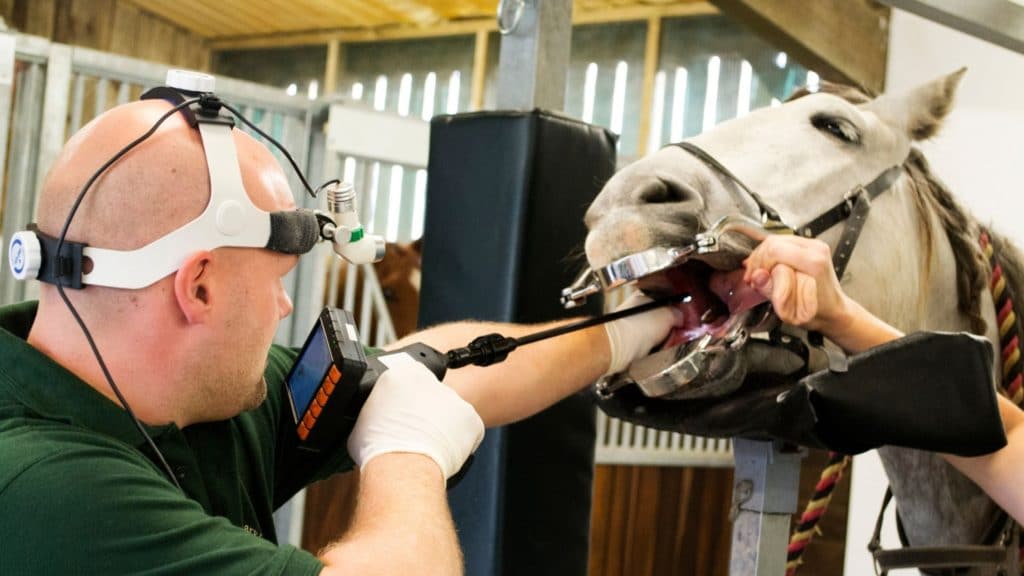Published on: March 9, 2025
Lasix, or furosemide, is one of the most debated drugs in horse racing. For decades, it has been widely used to treat Exercise-Induced Pulmonary Hemorrhage (EIPH), a condition affecting an estimated 90% of racehorses. While it can reduce lung bleeding by 50-70%, its use remains controversial due to concerns over performance enhancement, dehydration, and long-term effects on the breed.
With over 25 years of owning and working with racehorses, I’ve seen firsthand how Lasix impacts performance and longevity. I remember a young filly who trained brilliantly but struggled on race day. After several disappointing races, a scope confirmed she was a bleeder. The question wasn’t just whether to put her on Lasix—it was whether the drug would extend her career or mask a deeper issue.
This article explores what Lasix is, how it works, and why it remains a divisive issue. Drawing from experience and reputable equine research, this guide provides an unbiased breakdown of its uses, risks, and evolving regulations. Whether you’re a trainer weighing its benefits, an owner considering its long-term impact, or a fan curious about lasix in horse racing, you’ll find the key insights you need.

Lasix (Furosemide) in Horse Racing: What It Is and Why It’s Used
Lasix, the brand name for furosemide, is a potent loop diuretic that prevents sodium, potassium, and chloride reabsorption in the kidneys. This action increases urine production, rapidly eliminating fluid from the body. Originally developed for humans with congestive heart failure, kidney disease, or high blood pressure, it has become a widely used medication in horse racing to reduce Exercise-Induced Pulmonary Hemorrhage (EIPH)—a condition where horses bleed into their lungs due to extreme exertion.
How Lasix Affects Racehorses: Benefits, Risks, and Effects on Performance
Lasix helps racehorses by reducing blood volume, lowering pulmonary capillary pressure, and decreasing the risk of capillary rupture during exercise. Here’s how:
1. How Lasix Lowers Pulmonary Pressure and Reduces EIPH in Racehorses
- When a racehorse gallops, its heart rate can reach 240 beats per minute, and its spleen contracts to release up to 50% more red blood cells to maximize oxygen delivery (Source: American College of Veterinary Internal Medicine).
- This results in high pulmonary blood pressure, which can rupture lung capillaries, leading to EIPH (lung bleeding).
- Lasix lowers blood volume, reducing hydrostatic pressure in the lungs, helping to prevent these capillaries from bursting.
- Studies show that Lasix can reduce pulmonary artery pressure by up to 10-15% (Hinchcliff et al., 2015).
📌 Key Insight: By lowering pulmonary capillary pressure, Lasix helps protect lung health, but it also causes rapid dehydration, which can impact muscle function and endurance.

2. Lasix in Racehorses: The Effects of Dehydration and Electrolyte Loss
- A horse on Lasix can lose 20-30 pounds of body weight in fluid within hours (Washington State University).
- This weight loss is one reason some trainers believe Lasix improves race performance, as carrying less weight may reduce fatigue.
- However, this fluid loss also flushes essential electrolytes such as:
- Sodium (Na⁺) – Essential for muscle contraction and nerve signaling.
- Potassium (K⁺) – Affects muscle function; depletion can cause fatigue and cramping.
- Calcium (Ca²⁺) & Chloride (Cl⁻) – Impact hydration balance and cardiovascular function.
📌 Key Concern: Electrolyte imbalances can make horses more prone to muscle failure, delayed recovery, and heat stress. Trainers often adjust electrolyte supplementation to counteract these effects (JAVMA, 2011).

3. How Lasix Changes Blood Flow and Cardiovascular Function in Horses
- Blood osmolality refers to the concentration of solutes (e.g., sodium, proteins) in the blood.
- Since Lasix depletes blood volume quickly, it temporarily raises osmolality, leading to vascular constriction.
- Some research suggests this may improve oxygen utilization post-race, but also increases cardiovascular strain (The Emerging Role of Hypoxic Training for the Equine Athlete).
📌 Controversial Effect: Some veterinarians argue that Lasix changes how the horse’s body regulates blood flow, which could have unintended long-term consequences on cardiovascular endurance.
Lasix Effects on Racehorses: What You Need to Know
| Effect | Outcome |
|---|---|
| Increases urine production | Rapid fluid loss (~20-30 pounds) |
| Reduces blood volume | Lowers pulmonary capillary pressure |
| Decreases hydrostatic pressure | Reduces risk of lung bleeding (EIPH) |
| Flushes out electrolytes | Risk of muscle fatigue, dehydration |
| Alters blood osmolality | May affect cardiovascular function |
By modifying blood flow, reducing pulmonary stress, and lowering total body weight, Lasix serves as both a preventive tool for EIPH and a debated performance enhancer. However, its side effects—particularly dehydration and electrolyte imbalance—require careful management to maintain horse health and racing integrity.

Lasix Use on Race Day: How It’s Administered and Managed
In North American racing, horses running on Lasix are marked with an “L” next to their names in the program. Unlike other medications that trainers or grooms can administer, Lasix must be given by the track veterinarian on race day, at least three hours before post time.
In my experience, managing a racehorse on Lasix requires adjustments to pre-race routines. After the drug is administered, we limit hay and water intake to prevent excessive urination, which could further dehydrate the horse before the race. This practice is standard among trainers aiming to balance the drug’s effects while ensuring their horses remain hydrated enough to perform optimally.
Lasix in Racing: Ethical Concerns and Long-Term Impact
Lasix is at the center of a heated debate in horse racing. Supporters argue that it is a humane treatment for racehorses prone to Exercise-Induced Pulmonary Hemorrhage (EIPH), allowing them to compete without suffering from severe lung bleeding. Since EIPH can negatively impact performance, respiratory function, and overall welfare, Lasix is seen as a necessary medication to manage a widespread issue in racehorses.
However, critics contend that Lasix masks underlying health problems, enabling trainers to race horses that might otherwise be unfit to compete. By suppressing symptoms rather than addressing the root cause of EIPH, some believe that reliance on Lasix may encourage poor breeding decisions, perpetuating genetic predispositions toward bleeding instead of selecting for better respiratory soundness and durability.

📌 The International Federation of Horseracing Authorities (IFHA) has implemented strict medication bans in many racing jurisdictions worldwide, arguing that limiting race-day drug use promotes sounder breeding and long-term equine welfare.
Germany’s Approach: A Model for Breeding Soundness?
Germany has taken a strict stance on this issue, banning Lasix entirely—including in training. The country also enforces breeding regulations that prohibit horses with a history of severe bleeding from being used in reproduction, aiming to reduce EIPH incidence through selective breeding.
📌 This breeding restriction has led to fewer severe bleeders in German racing stock, according to studies on global racing trends (Bleeding and Genetics).
This debate raises fundamental questions about the balance between medication, performance, and equine welfare in modern racing. While Lasix offers immediate benefits, its long-term impact on the breed and the sport remains controversial, leading many racing jurisdictions to reconsider its role in competition.
Lasix in Horse Racing: Global Rules and Regulations
Unlike in North America, most major racing jurisdictions enforce strict medication regulations, limiting or banning Lasix use on race days. These policies aim to maintain fair competition, promote sound breeding practices, and prioritize equine welfare.
Where Lasix is Banned:
- United Kingdom & Australia: Race-day use of Lasix is prohibited to maintain fair competition and promote equine welfare. (Routine On U.S. Racetracks, Horse Doping Is Banned In Europe)
- Germany: Lasix is banned in both training and racing. Additionally, Germany enforces breeding restrictions; horses treated with furosemide while racing cannot be promoted to “recognized” stallions, affecting the eligibility of their offspring for breeders’ premiums. (thoroughbredracing.com)
Where Lasix is Restricted:
- Japan: Lasix is permitted during training but banned on race days to ensure horses compete without the influence of the medication. (Jockey Club stance on controversial drug Lasix the only choice).
Where Lasix is Allowed:
- United States & Canada: Lasix has been widely used, with over 90% of North American racehorses administered the drug before competing. However, there is a movement toward restricting its use. For instance, the Breeders’ Cup World Championships ran all 14 races without Lasix for the first time in 2021. Additionally, new anti-doping and medication rules propose prohibiting Lasix on race days in all 2-year-old and stakes races.
As regulatory bodies like HISA (Horseracing Integrity and Safety Authority) continue evaluating Lasix’s long-term impact, the future of the drug in U.S. racing remains uncertain.
This regional overview highlights the varying approaches to Lasix use in horse racing, reflecting differing priorities in medication policies, animal welfare, and competitive integrity. (Lasix is a “Failed Experiment”: Why the United States Should Follow Other Countries and Ban Lasix).

Lasix Alternatives: Managing EIPH Without Medication
As Lasix restrictions increase, trainers and veterinarians are exploring non-pharmaceutical alternatives to manage Exercise-Induced Pulmonary Hemorrhage (EIPH). While no single method fully replaces Lasix, several approaches aim to reduce lung bleeding, improve respiratory efficiency, and enhance overall equine health.
1. Selective Breeding: Can Genetics Reduce the Need for Lasix?
One long-term alternative to Lasix is selective breeding. Some racing jurisdictions, such as Germany, enforce strict regulations that prohibit the breeding of horses with a history of severe bleeding. The goal is to reduce reliance on medication over generations by promoting stronger respiratory soundness.
📌 Germany’s breeding policies have resulted in a lower incidence of severe bleeders in their Thoroughbred population, according to the International Federation of Horseracing Authorities (IFHA).
However, genetics alone cannot eliminate EIPH, as training intensity, conformation, and environmental conditions also play a role.
2. Do Nasal Strips Help Prevent EIPH in Racehorses?
Equine nasal strips work by supporting the soft tissues of the nasal passages, which reduces airway resistance and decreases respiratory effort.
- Effectiveness: Studies suggest that nasal strips can lower pulmonary capillary pressure, reducing the risk of lung bleeding.
- Performance Considerations: While some trainers report modest improvements in performance, nasal strips do not provide the same level of weight loss or fluid reduction as Lasix.
📌 Research from the Journal of Veterinary Internal Medicine suggests that nasal strips can reduce the severity of EIPH, but their effectiveness varies based on individual horse physiology.
3. Training Adjustments to Reduce Lung Stress in Racehorses
Trainers can modify race schedules and conditioning programs to help strengthen a horse’s respiratory system and minimize lung stress during peak exertion.
Effective strategies include:
✔ Gradual fitness building – Increasing intensity over time to improve pulmonary efficiency.
✔ Modified race schedules allow longer recovery periods between races to prevent repeated lung stress.
✔ Altitude training – Training at higher elevations to improve oxygen utilization and cardiovascular efficiency.
📌 A 2023 study in the Journal of Applied Physiology found that horses conditioned with interval training had improved pulmonary function, possibly contributing to reduced EIPH severity.
4. Can Nutrition Reduce EIPH? Key Dietary Adjustments
Certain dietary changes can support lung function and reduce inflammation, potentially lowering the risk of EIPH.
Key nutritional interventions include:
✔ Omega-3 Fatty Acids – Found in flaxseed and fish oil, reduces lung inflammation and supports vascular health.
✔ Vitamin C & Antioxidants – Help neutralize oxidative stress contributing to lung damage.
✔ Herbal Supplements – Some trainers use bioflavonoids or curcumin for their anti-inflammatory properties.
5. Hyperbaric Oxygen Therapy: A Promising Alternative to Lasix?
Hyperbaric Oxygen Therapy (HBOT) exposes horses to high-pressure oxygen, promoting lung healing and reducing capillary stress from EIPH. Some facilities have begun using HBOT as an alternative therapy, though further studies are needed to confirm its long-term effectiveness (Journal of Equine Veterinary Science).
Are Lasix Alternatives Effective? What Studies Show
While no single alternative replicates all the effects of Lasix, combining strategies—including breeding, nasal strips, structured conditioning, dietary adjustments, and HBOT—may help reduce EIPH severity and decrease reliance on medication.
📌 The Washington State University Study is currently investigating long-term strategies for managing EIPH without furosemide, which could shape future regulations in racing.
As Lasix restrictions grow, racing must assess whether these alternatives are enough to protect equine health.

Lasix in Horse Racing: Frequently Asked Questions
What is Lasix, and why is it used in racehorses?
Lasix, or furosemide, is a diuretic given to racehorses to prevent exercise-induced pulmonary hemorrhage (EIPH), which is lung bleeding caused by intense exertion. It works by reducing blood volume and pulmonary capillary pressure, lowering the likelihood of bleeding during a race.
How effective is Lasix in preventing EIPH in racehorses?
Lasix reduces EIPH severity by 50-70%, helping to prevent lung capillaries from rupturing. However, it does not eliminate the risk entirely, and some horses continue to bleed despite treatment.
What are the side effects of Lasix in racehorses?
The main side effects of Lasix in racehorses include dehydration and electrolyte imbalance, which can cause:
Muscle fatigue and cramping
Delayed recovery after races
Increased risk of heat stress
Many trainers adjust hay, water, and electrolyte supplementation to counteract these effects before and after a race.
Is the use of Lasix in racehorses banned internationally?
Banned: UK, Australia, Germany (including training use in Germany)
Restricted: Japan (allowed in training, banned on race days)
Allowed: North America (though major races like the Kentucky Derby have restrictions)
Does Lasix improve racehorse performance?
Yes, Lasix in racehorses is linked to improved performance, but not just because it reduces lung bleeding. The drug induces significant fluid loss, with horses losing 20-30 pounds of body weight after administration, which can lead to enhanced speed and stamina.
Is Lasix allowed in the Kentucky Derby?
Since 2021, the Kentucky Derby has prohibited race-day Lasix use. However, horses can still use it in training. (HOW IT WORKS)
Lasix in Horse Racing: The Debate, Future, and Industry Trends
Lasix (furosemide) is one of the most debated drugs in horse racing. While it effectively reduces the severity of Exercise-Induced Pulmonary Hemorrhage (EIPH) and has been linked to performance improvements, it raises concerns over dehydration, electrolyte imbalance, and fair competition.
Balanced Perspective: Weighing the Pros and Cons
As with any medication, Lasix must be evaluated within the broader context of equine health and ethics.
- Proponents argue that Lasix is a humane treatment, preventing severe lung bleeding and respiratory distress in horses.
- Critics claim that its performance-enhancing effects, weight loss benefits, and potential for masking underlying health issues make it a controversial tool in competitive racing.
The Future of Lasix in Horse Racing: What’s Next?
The future of Lasix in racing will be shaped by ongoing research, evolving regulations, and industry efforts to prioritize equine welfare. Based on emerging data, the Horseracing Integrity and Safety Authority (HISA) is expected to make a final ruling on furosemide use in 2026.
Lasix remains one of the most controversial drugs in horse racing. Should the sport move toward medication-free racing, or is Lasix a necessary tool for horse welfare? Share your thoughts in the comments! In my experience, Lasix has helped some racehorses, but it’s clear that the industry is moving toward stricter regulation. Whether that’s beneficial in the long run will depend on advancements in alternative treatments and breeding strategies.

About the Author: Miles Henry
Lifelong Horseman | Racehorse Owner | Published Author
Miles Henry brings over 25 years of hands-on experience training and owning Thoroughbred racehorses. Raised with Quarter Horses and Appaloosas, he’s spent a lifetime learning from horses—on the track, in the barn, and in the field. Today, he runs a small but successful racing stable in Louisiana and shares real-world insights on HorseRacingSense.com, helping horse owners, fans, and bettors navigate the sport with confidence.
📚 Books: View Miles’s books on Amazon »
🎧 Podcast Guest: Animal Tales Ep. 32 |
YouTube Interview
📩 Newsletter: Sign up for racing tips and horse care advice »
🔗 Follow Miles:
Twitter |
Facebook |
YouTube


